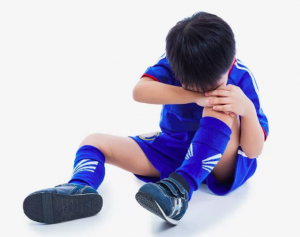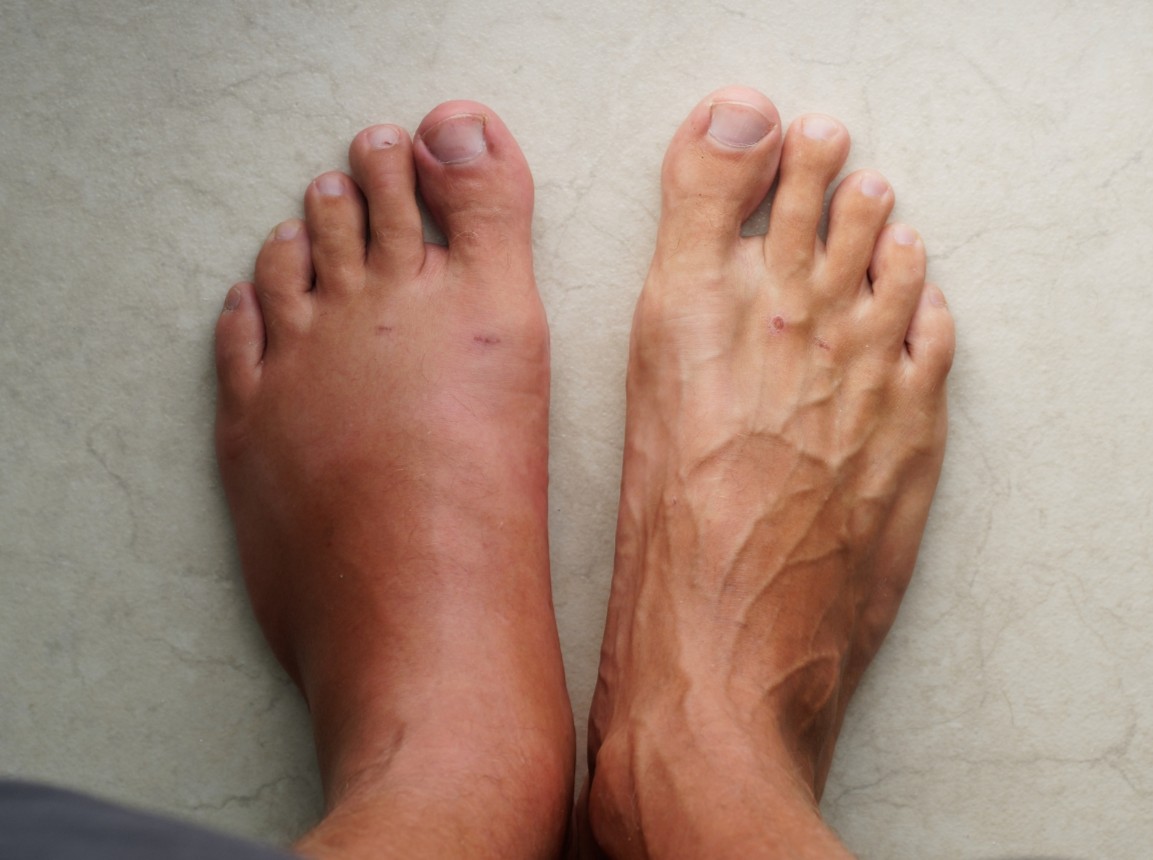 Osgood
Schlatter Disease (OSD) describes the inflammation of the growth plate just below the knee in children. Despite its name, it is not so much a
disease as it is a painful growth-related condition. It is clinically referred to as tibial tuberosity apophysitis because
of the location of the growth plate at the tibial tuberosity, which is the bony bump at the top of your shin-bone (tibia) and just below the
knee. Growth plates are located on the ends of growing bones and will eventually turn into solid bone when we reach full maturity.
Until they do, they are vulnerable to irritation from stress, tension and impact forces. OSD is an example of a ‘growing pain’, the most
common of which occurs at the growth plate at the back of the heel bone (Sever’s Disease).
Osgood
Schlatter Disease (OSD) describes the inflammation of the growth plate just below the knee in children. Despite its name, it is not so much a
disease as it is a painful growth-related condition. It is clinically referred to as tibial tuberosity apophysitis because
of the location of the growth plate at the tibial tuberosity, which is the bony bump at the top of your shin-bone (tibia) and just below the
knee. Growth plates are located on the ends of growing bones and will eventually turn into solid bone when we reach full maturity.
Until they do, they are vulnerable to irritation from stress, tension and impact forces. OSD is an example of a ‘growing pain’, the most
common of which occurs at the growth plate at the back of the heel bone (Sever’s Disease).
The painful symptoms of Osgood Schlatter Disease are caused by abnormal tension and forces at the top of the knee that irritate or damage the growth plate and cause it to become inflamed. Damage occurs because the area of growing bone is vulnerable as it’s still developing and is not yet solid bone, so is unable to withstand the tensile forces or high load that it can be exposed to. This is often thought to be caused by the repetitive pull from the quadriceps on the tibial tuberosity, where it inserts after crossing the knee as the patellar tendon. Other contributing factors may include:
Symptoms tend to present during times of growth, particularly between the ages of 8 and 15. OSD can affect one or both knees and typically affect active kids. Symptoms can include:
While mild cases of Osgood-Schlatter Disease may resolve fairly quickly, others may suffer from painful symptoms for years. OSD has shown to respond well to conservative treatment. Treatment starts with addressing the present painful symptoms, which is often achieved using the PRICE principles (protection, rest, ice, compression and elevation). Following this, treatment focuses on addressing the cause of the problem to stop the symptoms returning. This may include:

We’ve all had those days — you come home after hours on your feet, kick off your shoes, and notice your ankles look puffier than usual.
Swelling in the feet, ankles, or legs (known medically as edema) isn’t always a reason to panic. It can be as simple as a
salty lunch or a long flight.
But what if it’s happening more often — or seems to be getting worse? Swelling can sometimes be a sign of something more serious. Here’s
what could be going on and when to check in with your doctor.
.jpg)
Every year on October 8th, the world celebrates International Podiatry Day - a day dedicated to
raising awareness about foot health and the vital role that podiatrists play in our overall well-being.
Keeping your family on their feet and helping them to walk, run, play and exceed their goals is why we love getting up in the morning.
Ground Floor, One Health Building
122 Remuera Rd, Remuera
Auckland 1050, New Zealand
| MON - FRI | 7:30am – 6:30pm |
| SAT | 8:30am – 4:30pm |
| SUN | Some availability |
Make an Appointment
Online Schedule
Our virtual receptionist is available 24/7 to help with general questions, booking requests, and clinic information, even when our team is busy, or it's after hours.
Whether you're calling us or using our website, you'll get fast assistance any time of day. And if your query needs a personal touch, a member of our team will follow up as soon as possible.
If you’d like to see a podiatrist who speaks your preferred language, just give us a call and we’ll help you book.